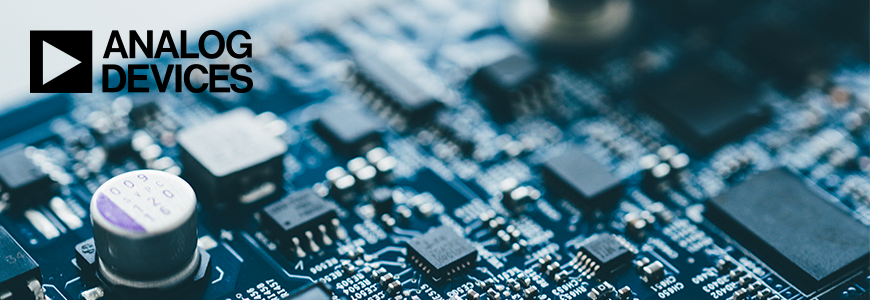When developing high-precision measurement equipment, we use operational amplifiers and AD converters that require both positive and negative power supplies. In that case, the problem is the design of the positive and negative power supplies.
In this article, I will touch on the problems when designing positive/negative power supplies, and finally introduce a solution that is simple and can be configured with low noise.
Problems of positive/negative power supply design (1)
A problem when designing a positive/negative power supply is that the power supply circuit becomes complicated.
Even when designing a simple step-down switching power supply circuit, it becomes complicated when designing it discretely, but when designing an inverting negative power supply, it becomes even more complicated.
Figure 1 is an example of a ±5V output power circuit for a switching power supply using the LTC3863 and LTC3864. Since two switching regulators are used, the circuit scale becomes large, and there is a problem that the pattern design becomes difficult.
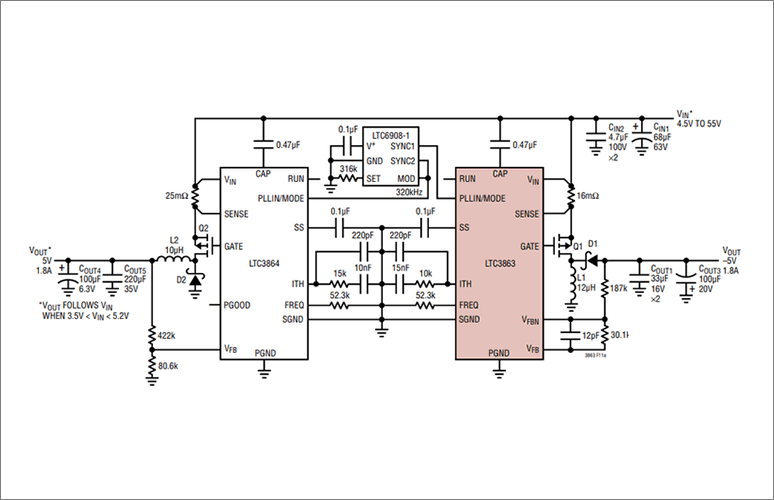
Problems of plus/minus power supply design (2)
Since the output of a switching regulator has a large noise, it cannot be directly input to an operational amplifier or an AD converter, so two linear regulators are required for the circuit in Figure 1. Therefore, the circuit scale becomes even larger.
Fig. 2 shows an example of a circuit that configures a positive/negative power supply with one switching regulator. It's simpler than the previous example, but it still feels complicated.
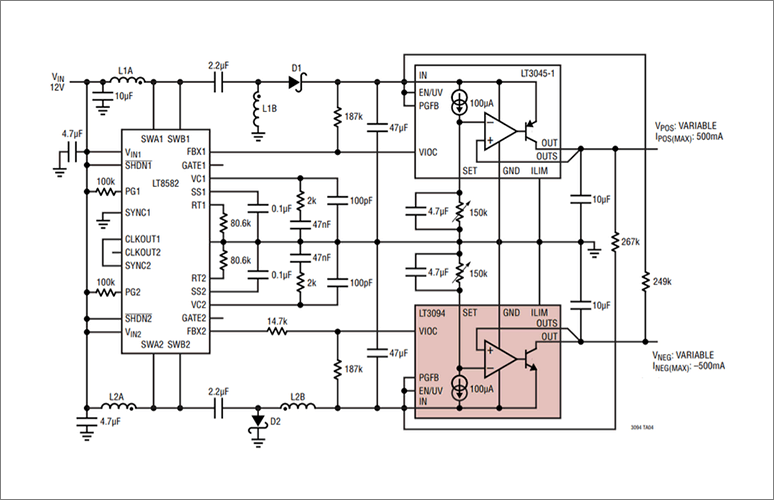
One-chip solution
Conventional switching regulators have a circuit configuration with many peripheral components, even in a one-chip configuration.
However, by using the µModule series LTM8049, it is now possible to construct a positive/negative power supply with a very simple circuit configuration that incorporates peripheral components such as inductors and power FETs (Figure 3).
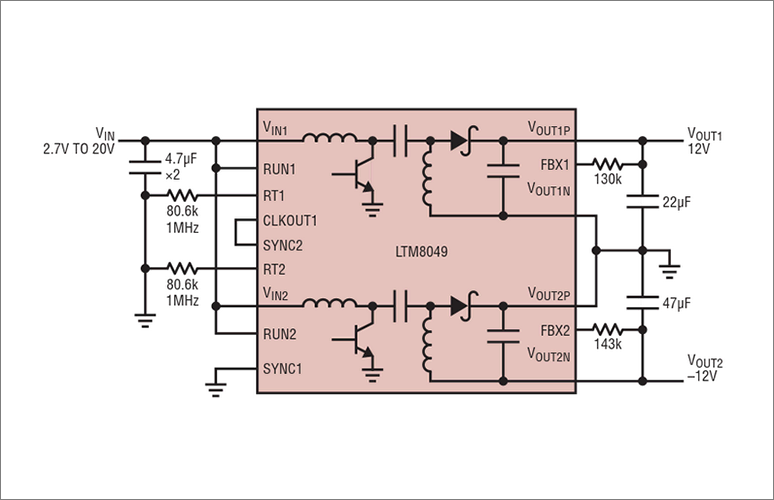
Since the LTM8049 is a switching regulator, it is necessary to insert a linear regulator after it when using it in an analog circuit. For load currents less than 150mA maximum, the LT3032 linear regulator one-chip solution simplifies the circuit configuration (Figure 4).
The LTM8049 and LT3032 allow two ICs to form a low noise plus/minus power supply that can be used in analog circuits.
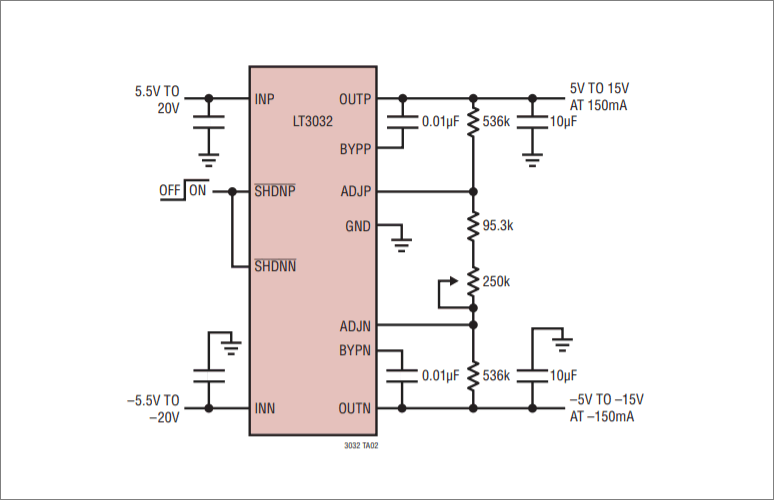
Couldn't it be simpler than this? However, since it is a simple analog circuit, if you say, "There is no problem with a current of up to 50mA!", a one-chip solution will be possible. It is possible to use the LTC3260, which has a charge pump + linear regulator configuration on a single chip.
Since the output is through a linear regulator, it is possible to obtain a low-noise power supply. It's the perfect solution if you have a little analog circuitry in your front-end circuitry.

Click here for recommended seminars/workshops
[For FPGA designers] Power trouble example seminar

